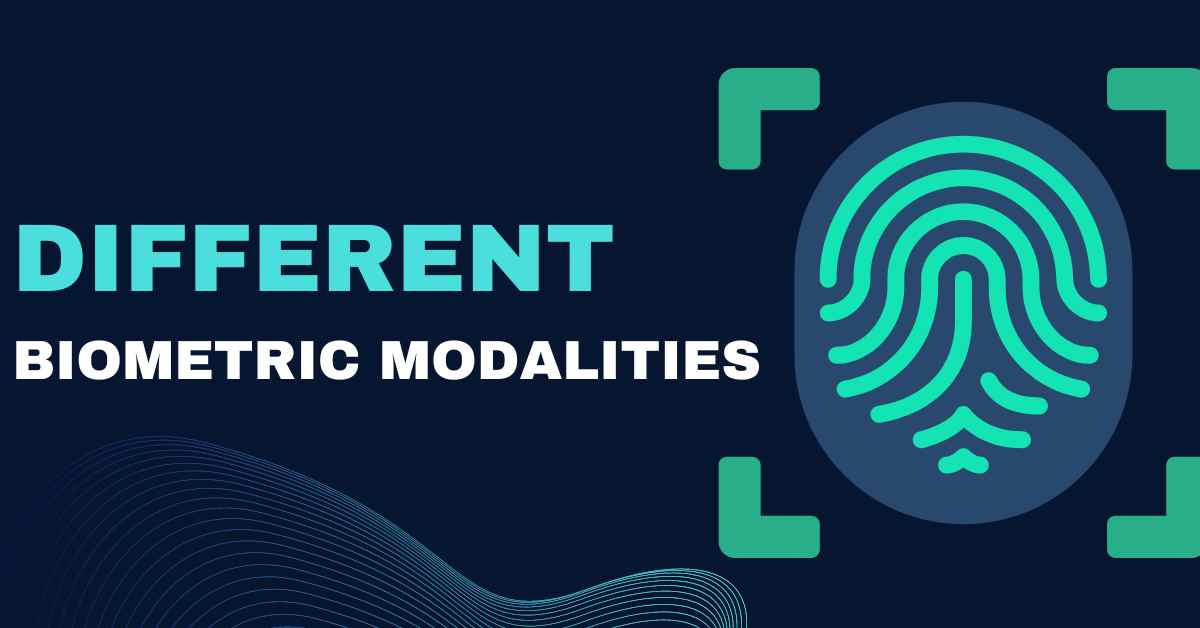Biometrics is a technology that is quickly becoming ubiquitous in today’s modern world. From unlocking smartphones to granting access to secure buildings, biometrics are being used to provide secure authentication for a variety of applications.
But what exactly is biometrics and what are the different biometric modalities out there?
In this blog post, we’ll explore the different biometric modalities and how they are being used to enhance security and provide convenient access to the things we need.
Next: Why Do Law Enforcement Use Fingerprint Scanners?
What is Biometrics?
Biometrics is a means of verifying the identity of someone based on the physical characteristics that are unique to the individual. It is a technology that has seen significant advances in recent years, and its use is becoming increasingly common in everyday life.
Biometric systems are used in various applications, including border control, access control, law enforcement, banking, and healthcare. Biometrics offers a high level of security and accuracy compared to traditional authentication methods such as passwords and PINs.
Different Types of Biometric Modalities
There are several different biometric modalities that can be used to verify someone’s identity. These include iris, fingerprint, palm, and face.
Iris
The iris is an organ at the front of the eye that is used in biometric authentication. It is composed of a complex network of colored muscles and connective tissue. An iris scan captures the unique patterns of the iris, which are then compared to a database of known identities. This type of biometric modality is considered to be one of the most secure, as the iris is highly unique and difficult to replicate.
This modality is based on the unique pattern of the human eye and is one of the most secure forms of biometric authentication available. It is highly accurate and can be used in multiple security-sensitive environments, such as banking, finance, healthcare, and government.
One of the most popular types of API integration for iris biometrics is to integrate with an access control system, allowing for user authentication and authorization for different areas of a facility. This integration can be used to grant access to secure areas, identify authorized personnel, and restrict access to certain areas of a facility. API integration also allows for the deployment of biometric-based security protocols, such as facial recognition, which can identify authorized personnel and ensure that access is restricted to those personnel. Additionally, API integration provides organizations with the flexibility to incorporate the biometric modality seamlessly into their existing infrastructure.
Pros:
- High level of accuracy and reliability
- Non-intrusive and non-contact, making it hygienic and convenient
- Unique and difficult to fake or replicate
- Stable and consistent over time, with low false acceptance rates
- Can be used for both identification and verification purposes
- Does not require physical contact, making it suitable for people with disabilities or injuries
Cons:
- Requires specialized equipment for capture and verification
- May not be suitable for individuals with certain eye conditions or injuries
- Can be affected by changes in lighting conditions or user behavior (e.g., wearing glasses or contacts)
- Privacy concerns regarding the collection and storage of biometric data
- Limited adoption and recognition compared to other biometric modalities
Face
Face recognition is a biometric modality that relies on the unique characteristics of an individual’s face. Facial recognition is based on measuring the distances between the eyes, nose, and mouth and comparing them to a database of known identities. This type of biometric verification is becoming increasingly popular, as it is highly accurate and reliable.
The face biometric modality has a wide range of industry applications, including security and surveillance, access control, identity verification, and customer engagement. Security and surveillance companies use face recognition technology to identify potential threats and track criminal activity. Access control systems use it to grant or deny access to restricted areas as well.
APIs (Application Programming Interfaces) are used to integrate face biometric technology into various applications and systems. API integration allows third-party applications to access and utilize the face recognition technology for various purposes. For example, an access control system may integrate a face biometric API to verify the identities of individuals attempting to enter a restricted area.
Similarly, a customer engagement platform may integrate a face biometric API to personalize customer experiences based on their facial expressions and emotions. API integration allows for seamless integration of face biometric technology into various applications and systems, enabling the development of innovative and effective solutions for businesses and organizations.
Businesses can now integrate highly secure and efficient authentication solutions into their systems with cutting-edge technologies like the SkyBiometry face recognition API, streamlining their operations and improving their user experience.
Pros:
- Non-intrusive and non-contact, making it hygienic and convenient
- Easy to use and does not require physical contact or specialized equipment
- Fast and efficient, allowing for high throughput and quick verification
- Can be used for both identification and verification purposes
- Widely recognized and adopted biometric modality
- Suitable for people with disabilities or injuries
Cons:
- Can be affected by changes in lighting conditions or user behavior (e.g., wearing glasses or makeup)
- Can be susceptible to spoofing with high-quality fake faces or photos
- May not be suitable for individuals with certain facial conditions or injuries
- Privacy concerns regarding the collection and storage of biometric data
- Can be affected by age and changes in appearance over time
Fingerprint
Fingerprints are one of the oldest and most commonly used biometric modalities. They are composed of unique patterns of ridges on the fingertips that are unique to each individual. A fingerprint scan uses an advanced optical scanner to capture the ridges and valleys that make up the fingerprint. This data is then compared to a database of known identities. Fingerprints are generally considered to be reliable, however, they can be blocked by dirt or sweat on the finger, causing the scan to fail.
Fingerprint biometric modality is one of the most widely used biometric modality in the industry. Fingerprint recognition technology has been used for securing access to restricted areas, controlling access to sensitive information, authenticating identity for financial transactions, and more.
Integrating API into a fingerprint biometric modality makes it easier to integrate the technology with existing systems, allowing for better control of access and security. API integration allows organizations to integrate fingerprint biometric authentication with their existing applications and systems. For example, API integration can be used to securely authenticate users, authenticate financial transactions, and authenticate access to restricted areas. With API integration, organizations can ensure that their systems and applications are secure and compliant with industry regulations.
Pros:
- High level of accuracy and reliability
- Widely recognized and adopted biometric modality
- Easy to use and non-intrusive, making it convenient for users
- Difficult to fake or replicate, providing a high level of security
- Stable and consistent over time, with low false acceptance rates
- Can be used for both identification and verification purposes
Cons:
- Can be affected by certain skin conditions or injuries
- May require multiple attempts to capture a clear image
- Can leave residue on scanning equipment, requiring frequent cleaning
- Privacy concerns regarding the collection and storage of biometric data
- Can be susceptible to spoofing with high-quality fake fingerprints or lifted prints.
Palm
Palm scans are becoming increasingly popular, as they are considered to be more secure than fingerprint scans. The palm is scanned using infrared light, which captures the unique patterns and lines of the palm. This data is then compared to a database of known identities. Palm scans are gaining popularity due to their high accuracy and reliability.
The palm biometric modality is also being used in many different industry applications. This modality uses palm prints for authentication, which can be used for a variety of applications such as access control, time and attendance monitoring, and fraud prevention.
In order to integrate palm biometric modalities into industry applications, the use of an API has become the go-to solution. This means that businesses can easily integrate their existing applications with palm biometric modalities, allowing them to make use of the data collected by the modalities.
This is useful for access control, time and attendance monitoring, and fraud prevention, as the data collected can be used to authenticate users and ensure the security of the system.
Pros:
- Large surface area for scanning, allowing for more accurate and reliable readings
- Non-intrusive and non-contact, making it hygienic and convenient
- Difficult to fake or replicate, providing a high level of security
- Stable and consistent over time, with low false acceptance rates
- Can be used for both identification and verification purposes
- Suitable for people with disabilities or injuries
Cons:
- Requires specialized equipment for capture and verification
- May not be suitable for individuals with certain palm conditions or injuries
- Can be affected by changes in lighting conditions or user behavior (e.g., wearing gloves or jewelry)
- Privacy concerns regarding the collection and storage of biometric data
- Limited adoption and recognition compared to other biometric modalities
Each of these biometric modalities has its own strengths and weaknesses, and there is no single modality that is the most secure. It is important to understand the industries applications, advantages and disadvantages of each so that the most appropriate modality can be chosen for a given application. By doing so, businesses can ensure that their systems are secure and their customers’ identities are protected.












